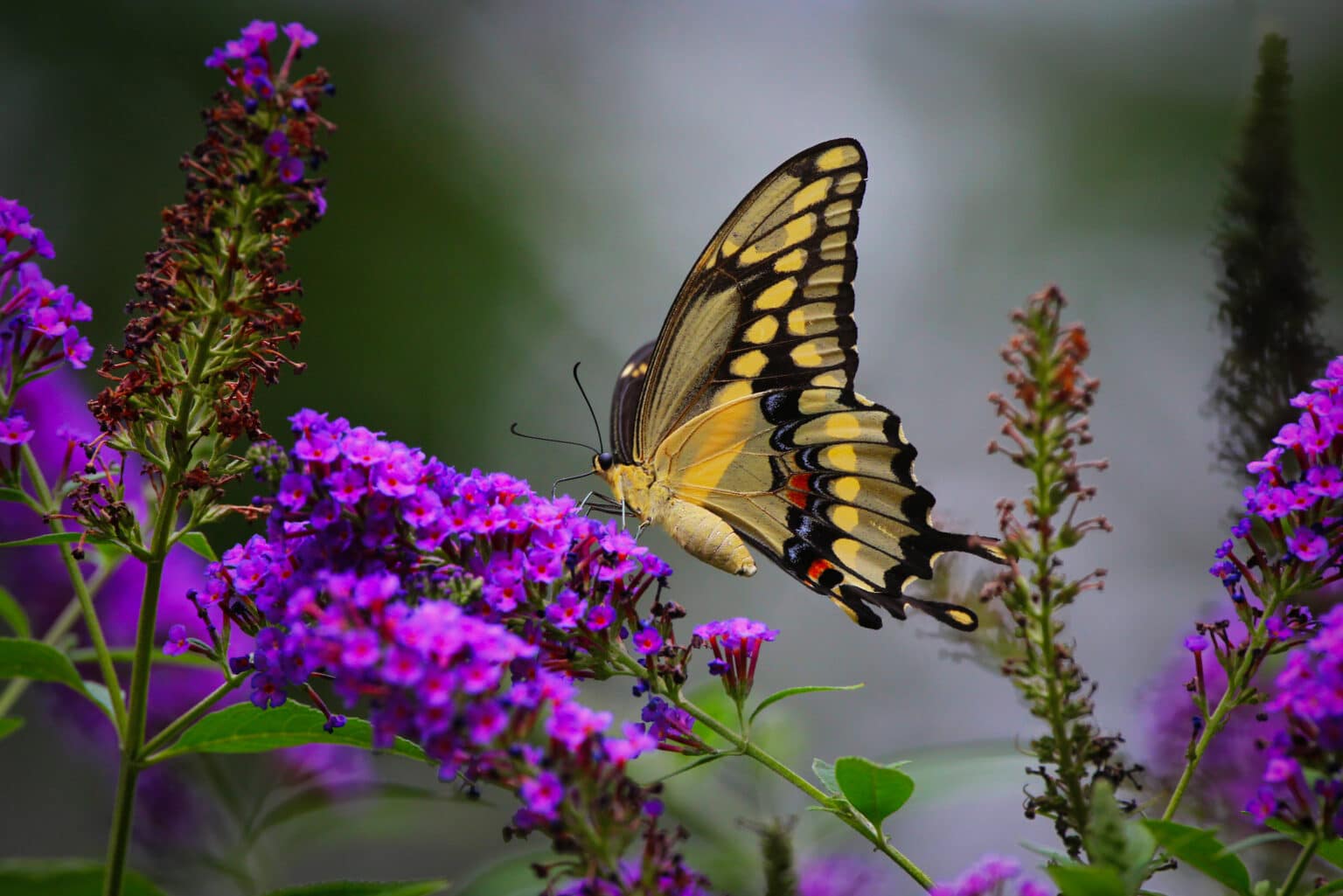Why Choose Native Plants?
Natives plants provide important habitat
Gardening with native plants provides habitat for pollinators, including butterflies, moths, bees, birds, flies and beetles. Pollinator populations are declining and it’s important to provide nectar and host plant sources wherever possible on the landscape to help maintain and boost populations. Just one or two native milkweeds in a garden, for instance, can provide a place for monarch butterflies to lay their eggs. Native wildlife evolved with native plants and rely on them for food, shelter and as host plants for breeding.
Natives plants require less maintenance
After they are established, native plants require less maintenance, which saves time and money! They have extensive root systems that can reach deeper than 15 feet. These deep root systems help stabilize the soil, reduce erosion and increase the soil’s capacity to store water.
Natives also are adapted to the local climate, which results in less watering (though plants may need frequent watering during the first year to become established and during drought). Natives also are locally adapted to drier sites with “poorer” soils so they do not need to be fertilized.
Establishing a Garden
Sunlight: Determine how many hours a day the garden area has full sun. This will help with the decision to use full-sun, part-sun or shade plants. A garden site is considered full sun as long as it gets at least six full hours of direct sunlight on most days. Plant shade plants in areas that receive less than three hours of direct sun per day.
Water: Is the soil usually wet, dry or somewhere in between? Some plants don’t like to get their feet wet, so pick plants whose moisture preferences match the garden.
Soil: Good soil is literally the foundation of a healthy and productive garden. Most plants will thrive in moist but well-drained soil. With clay or sandy soils, compost may be used to help make the garden amenable to planting.
Spacing: Planting at least three of the same flowers together is helpful for butterflies because of how their vision works. Butterflies nectar at different heights, so vary the plants to include those that are low, medium and taller. It is better to plant swaths of color than to have a lot of single plants.
Bare Ground: Consider leaving a small spot of ground bare for nesting bees. A muddy spot in the garden allows butterflies to “puddle,” which means drawing minerals from the soil.
Chemicals: Avoid using broad-spectrum herbicides or insecticides in the garden. Herbicides intended for “weeds” can drift and harm nearby plants. Insecticides are not selective. If they are applied to get rid of one species (aphids, for instance), they will affect all of the insects in the treated area negatively. If they are systemic insecticides, they could be absorbed by plants and harm nontarget insects that eat them. Remember, it’s a good thing if plants are being eaten! It means that the garden is part of the ecosystem and those garden “pests” could be food for birds and other insects.
Choosing Plants
When choosing plants, consider adding a variety of species that bloom from spring through fall. This will ensure that nectar, pollen and seed resources are available throughout the year. Selecting early- and late-blooming plants is especially important for native pollinators. Native bees are some of the first to emerge in early spring, and migrating monarchs rely on fall-blooming nectar plants to fuel their migration. The greater the variety of plants, the more diversity wildlife will benefit. Planting just a few native plants is worthwhile!
Visit https://www.agfc.com/education/native-gardening/?utm_campaign=National%20Pollinator%20Week&utm_medium=sms&utm_source=sw_attentive&externalId=jvbGb.






